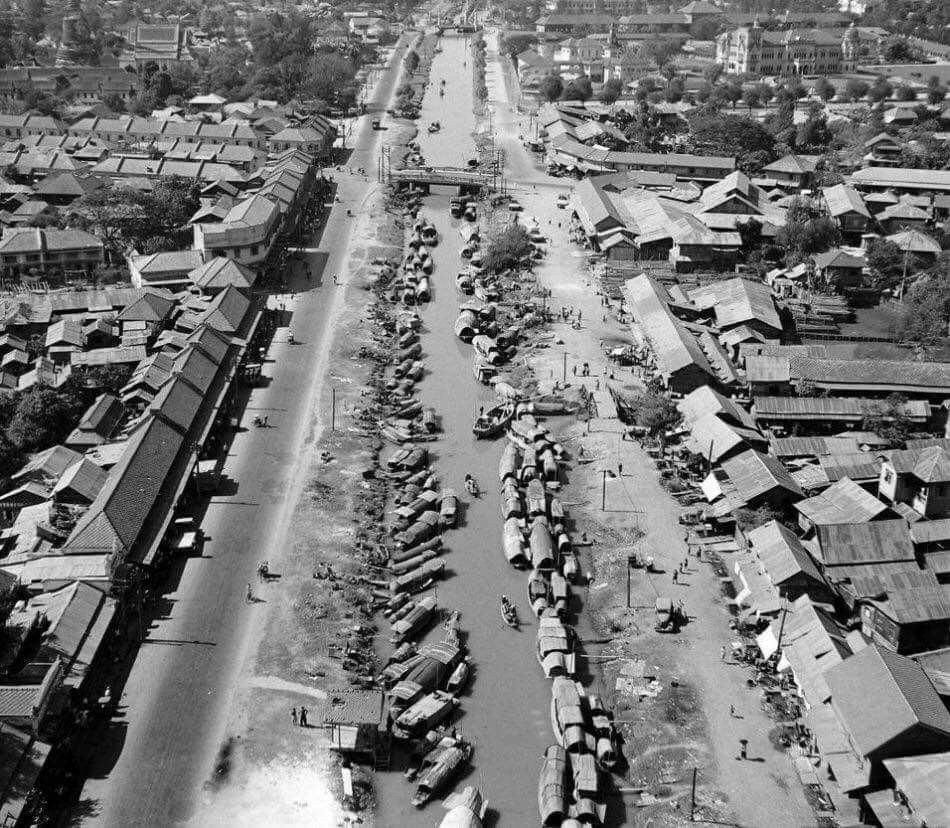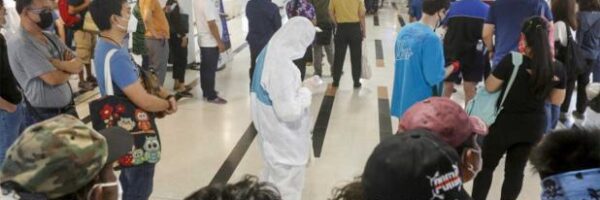
Embassy Row – Sathorn Road
Bangkok saw a slow expansion to the north and east after New Road was opened in 1864, then a rapid expansion started in the 1880s. Soon land speculators and property developers started looking at buying plots in this area. After Klong Silom was excavated by the government in 1858, three more parallel klongs, or canals, were eventually dug for public transportation. However, these were private initiatives paid for by land developers. They were permitted to sell the land on either side of it to private buyers. In 1888, what would become Sathorn (or Sathon) Road, first started out as Klong Pohyom or Pohyom canal. It connecting Klong Hua Lampong canal (later Straight Street and finally Rama IV Road) and the Chao Phaya River. After the developers had excavated the canal and built a roadway on top of both earthen banks.
Originally Klong Sathorn was named Klong Pohyom (or ‘Mr. Yom’s Canal’) after the Chinese man who owned the company that excavated the canal. He started selling plots of land upon completion. He was later ennobled by King Chulalongkorn (King Rama V), with the name Luang Sathon Racha Yut, for his accomplishment. The canal became to be known by an element in his title, Sathon or Sathorn.
Rows of trees were planted on both sides of the two roadways giving the thoroughfare a shaded appearance. Spacious homes were the first to be built on both sides of Sathorn Road or along the adjacent side sois. There were offices of French, English, Danish, German, and American doctors, including many Thai medical hospitals and medical practitioners in the immediate area. At the junction of Klong Sathorn and the river, the area was filled with docks and various rice mills. It was also the location of the Chinese port to transport goods and passengers to Singapore, Hong Kong, and China.

The first foreign hospital was the British Nursing Home (BNH) established on Convent Road in 1898 under royal patronage. Initially a small wooden building, it served the needs or resident expats who needed higher quality medical care as a non-profit facility. Later it was renamed the Bangkok Nursing Home and finally just BNH. Also in 1898, St. Louis Hospital was founded as a non-profit French medical treatment facility. Later St. Louis Church was established next to the hospital. The Chinese Chamber of Commerce built an impressive edifice in 1915 to serve as a meeting place for the richest Chinese-Thai merchants and businessmen in the country. Eventually some foreign embassies started to be established along the roadway, including Russia after formal diplomatic relations were started in 1897.
Several wats were already in the general area. These include Wat Yannawa, a temple dating back to the Ayutthaya period and Wat Don, built in 1797. However, in the 1970s the trees were all cut down and the canal was confined to a narrow concrete channel so the roads could be widened, a far cry from the original.



